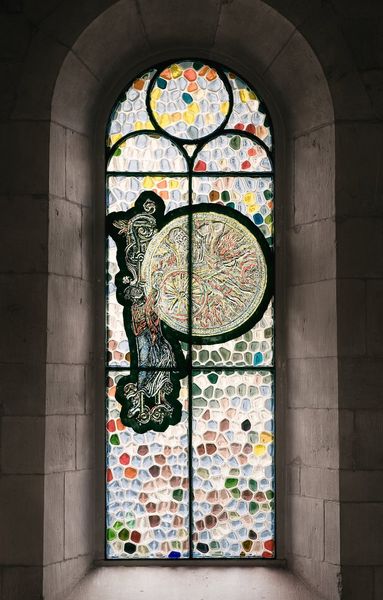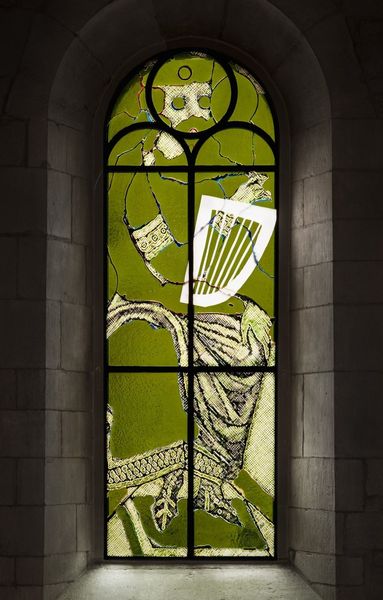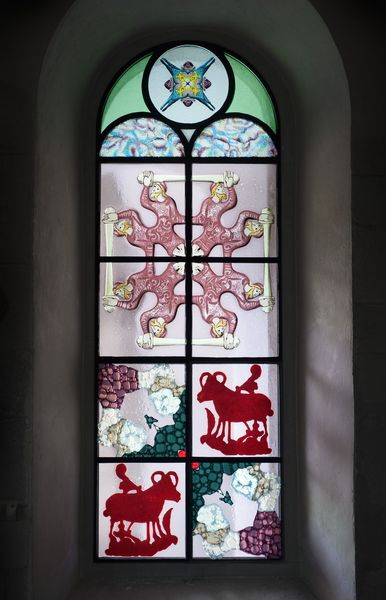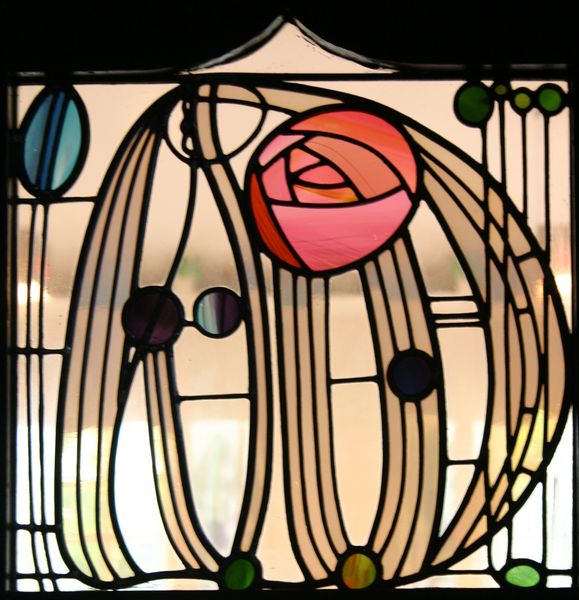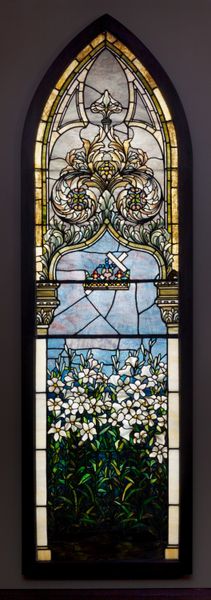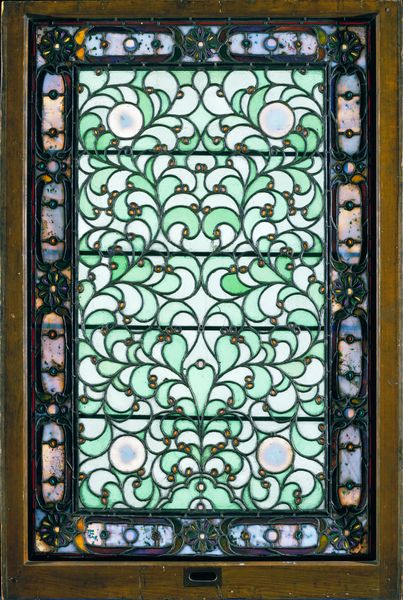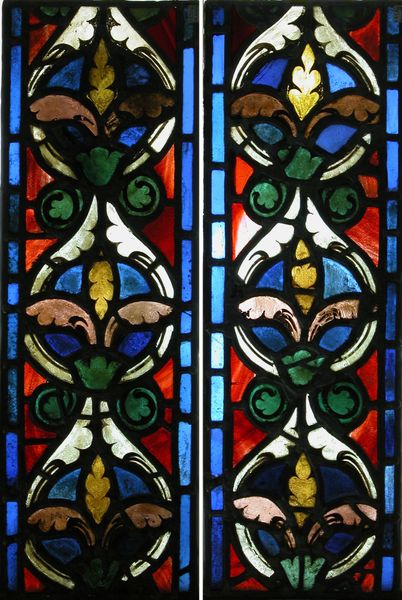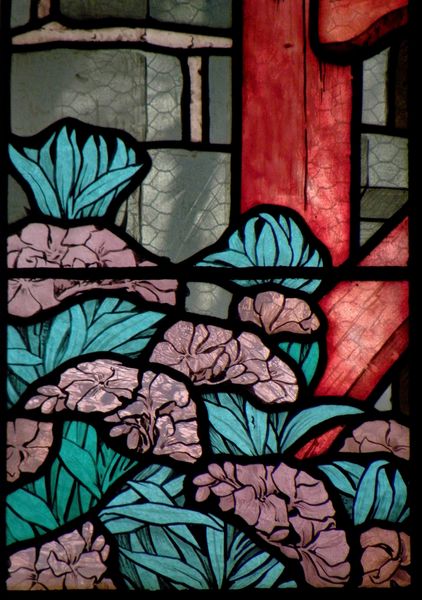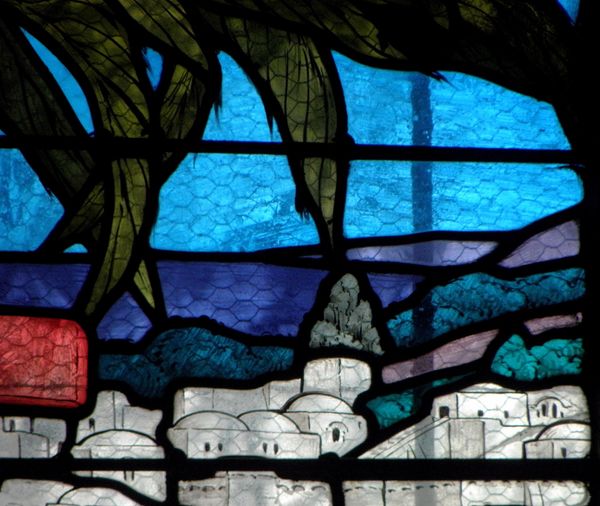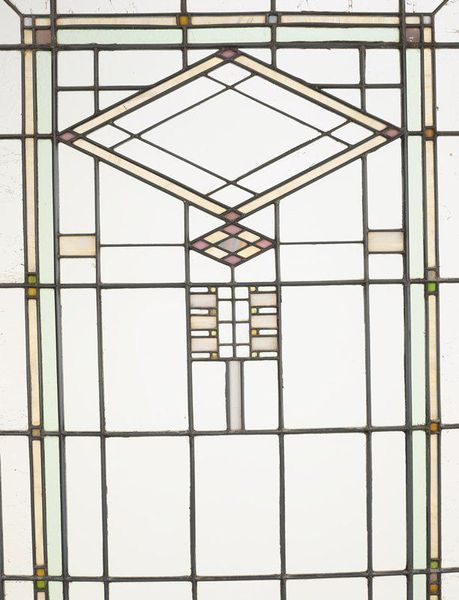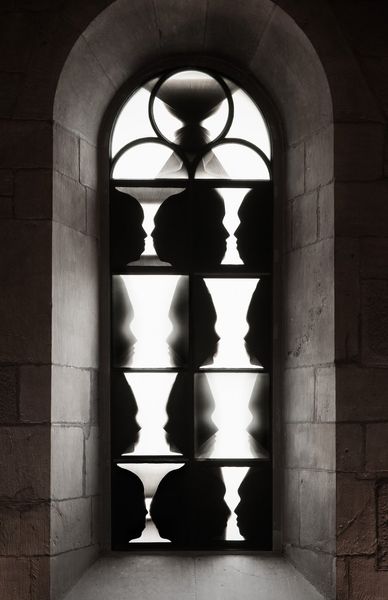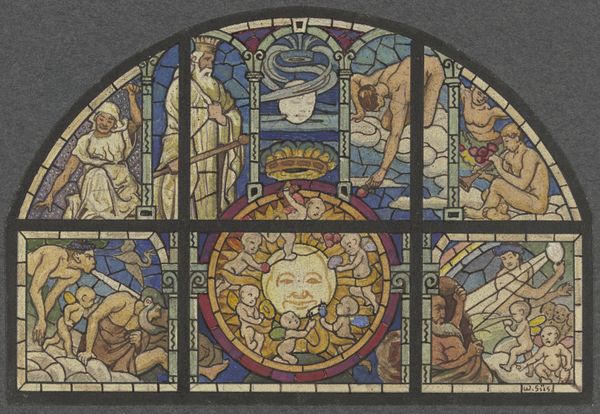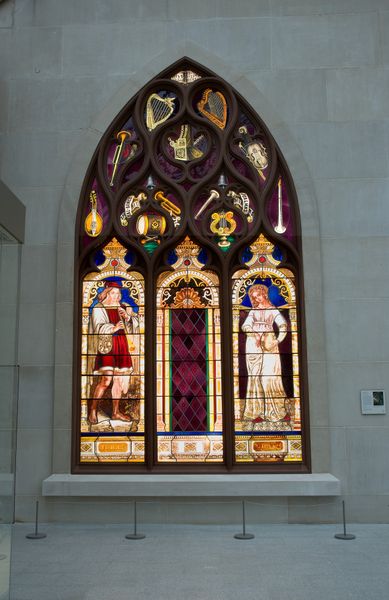
#
capitalist-realism
Copyright: Sigmar Polke,Fair Use
Curator: Standing here, bathed in the reflected light, it's hard not to be struck by the sheer whimsy of Sigmar Polke's stained glass artwork, "Der Sündenbock," or "The Scapegoat," from 2009. Editor: Whimsical indeed! My first thought was, what a strange and beguiling take on the Gothic tradition. It's as if a medieval artist dreamed up a sci-fi bestiary. The geometric figures hovering around the animal forms give it an otherworldly feeling, and somehow melancholic, don't you think? Curator: Absolutely melancholic. Polke had a knack for blending high and low art, old and new. He layers references to both Medieval art, especially gothic, and alchemy, into these stained-glass windows. And like actual historical Medieval imagery, it explores visual storytelling and symbolic depth. Notice the geometric shapes placed above and on the figure of the goat. It makes me think about the weight of symbols and what it means for something or someone to carry it. Editor: The very structure seems symbolic; glass itself is a transformational substance made permanent. So Polke is capturing a pivotal moment within cultural memory itself? In historical use, the goat carried the symbolic weight of communal sins, then exiled—a visual trope ripe for psychological projection! The geometric forms become additional symbolic weights or even perhaps a modernist representation of original sin and inherent human fallibility. Curator: Right! It's as if the artist wanted us to ask: What old stories continue to haunt us, individually and collectively? In our contemporary society who or what carries that communal guilt and negativity? Editor: Precisely! Plus, I think the composition enhances the emotional impact. The muted, almost pastel colors evoke a dreamlike state. While stained glass often radiates brilliance, Polke's palette creates a haunting ambiance—inviting reflection more than celebration. I imagine viewing it at twilight would be quite affecting. Curator: The subdued lighting works so well precisely because, as you noted earlier, our eyes expect to see radiant colors within that gothic architectural design, we as the viewers bring all those historical associations with us. Yet the work becomes a deeply personal contemplation in contrast. Editor: In closing, "Der Sündenbock" shows us the beautiful and disturbing capacity of the past to echo within the present, always transformed yet stubbornly persistent. Curator: Yes, and with this "Scapegoat," Polke reminds us to question which symbols still unconsciously drive us and why. It's a complex piece of work which I think encapsulates so much of our contemporary cultural landscape.
Comments
No comments
Be the first to comment and join the conversation on the ultimate creative platform.
